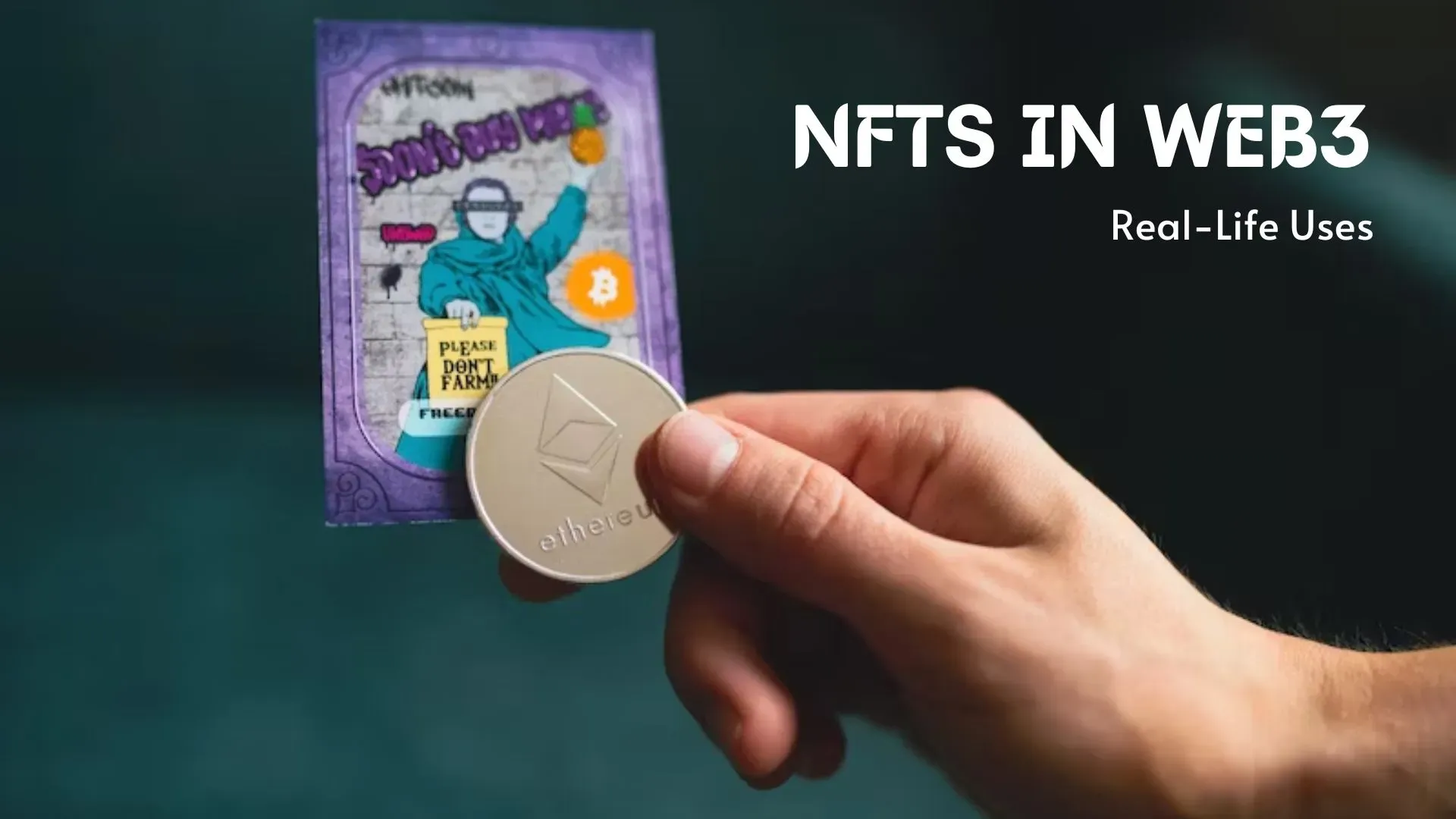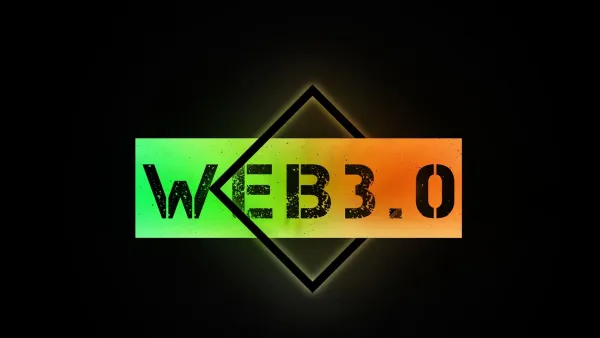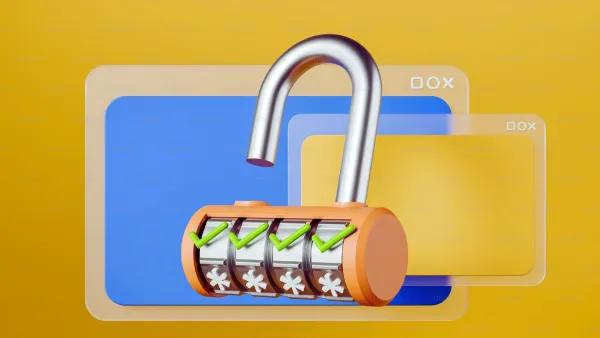In the blockchain field, Non-Fungible Tokens (NFTs) are transforming how we see ownership and validity. They have completely taken the digital world by storm. Formerly popular in the art world, NFTs have since broadened their horizons, finding use in a variety of sectors and opening up new possibilities.
In this article, we will look at the various applications of NFTs in Web3, beyond art, and how these unique digital assets are transforming businesses.
What Are NFTs?
Non-fungible tokens (NFTs) are assets that have been tokenized using blockchain technology. They are given unique identifying numbers and information that set them apart from other tokens. NFTs can be traded and swapped for money, cryptocurrencies, or other NFTs, depending on the market and owner value.
Tokens are also used to represent cryptocurrencies, however, the major difference is that two tokens from the same blockchain are interchangeable, making them fungible. Although two NFTs from a single blockchain may appear identical, they aren't interchangeable.
NFTs were developed decades before they were popular with consumers as a whole. According to reports, the first NFT sold was Quantum, which was created and tokenized by Kevin McKoy in 2014 on one blockchain before being minted and sold on Ethereum in 2021.
Real Life Uses Of NFTs
While NFTs are best known for their use in the art world, they offer many other applications that could streamline trading by eliminating middlemen.
1. Collectibles
Rare collectibles like trading cards, sports memorabilia, and even virtual assets from video games can be represented by NFTs. NFTs are currently utilized to tokenize physical goods, making them easily marketable in the digital domain, from vintage baseball cards to rare Pokémon trade cards.
This invention not only keeps tangible artifacts valuable but also presents them to a wide range of collectors.
2. Real Estate And Metaverse
In metaverse platforms, NFTs are redefining the concept of virtual real estate. Users may buy virtual lands, buildings, and assets as NFTs, allowing them to develop, monetize, and trade in the virtual environment. The rise of metaverse platforms has created new potential for virtual experiences and social connections.
3. Gaming
The game industry was one of the first to employ NFTs outside of art. NFTs enable gamers to own and sell in-game assets and characters, giving virtual goods actual ownership and worth. Players may purchase, sell, and exchange NFT-based game assets across several gaming platforms, creating a bustling secondary market.
4. Music
Artists and musicians may use NFTs to tokenize their music and digital material, giving them ownership over their intellectual property and income possibilities. Artists can use NFTs to offer limited copies of their records, concert tickets, or exclusive rights to royalties, allowing them to maintain a direct link with their audience.
5. Virtual Fashion
Fashion corporations are looking into the possibility of using NFTs to produce virtual fashion goods that customers may own and show in virtual worlds or social platforms. Wearables based on NFTs enable users to express their style and individuality in the digital arena, reducing the distinction between real and virtual fashion.
6. Ticketing
Tickets for concerts, festivals, and athletic events can be bought, sold, traded, and verified using NFTs. Musicians and performers are using NFTs to provide unique material, concert tickets, and goods to their fans directly.
NFTs allow artists to retain control of their intellectual property while also establishing direct links with their audience, removing the need for intermediaries.
7. Licensing
NFTs are transforming the management and licensing of intellectual property (IP). Tokenizing works allows creators to sell licenses for certain uses, durations, or areas. Smart contracts allow for automatic royalty payments, which simplifies the licensing procedure and ensures reasonable compensation.
8. Environmental Impact Projects
NFTs are also influencing environmental and social impact initiatives. Charities and non-profits are using NFTs to generate donations, rewarding supporters with one-of-a-kind digital items or experiences.
9. Virtual Identity And Ownership
NFTs provide an innovative approach to establishing virtual identity and digital ownership. Individuals may tokenize their avatars, virtual commodities, and distinct online identities, therefore creating an easily accessible and credible digital presence across several platforms.
NFT token development is encouraging innovation, decentralization, and user empowerment in ranging from gaming and virtual real estate to music and sports. As more sectors grasp the potential of NFTs, we can expect further disruption and transformation throughout the global economy, transforming how we interact with digital assets and encouraging a more inclusive and decentralized future.
Benefits of NFTs
Tokenizing a physical commodity can help to speed up sales procedures and eliminate the need for intermediaries. On a blockchain, NFTs representing digital or real artwork can eliminate the need for intermediaries and allow merchants to communicate directly with their target consumers.
1. Transparency
NFTs have the ability to build a system of transparent ownership. There is no need for a third party to handle ownership because it can be recorded on the blockchain.
2. Immutable
NFTs are immutable because data cannot be changed once it is stored on a blockchain. This results in a clear record of ownership and transactions.
3. Accessibility
NFTs can be used to increase access to ownership. Transferring ownership of an NFT is significantly easier than transferring ownership of real-world things.
4. Trackability
NFTs may be used to build distributed tracking systems. Ownership may be documented on the blockchain and transferred in a decentralized manner.
NFTs have several benefits in addition to digital art. They provide real-world benefits, from secure asset ownership to efficient supply chains and creative gaming experiences.
What Is The Future Of NFTs?
Non-fungible tokens have influenced nearly every sector, from art and gaming to real estate. NFTs are more popular than ever, with new initiatives being launched on a regular basis, whether by new startups, investors, or on Twitter or Meta. The future applications of NFTs are predicted to be essentially unlimited.
Current possibilities are still in their early stage, and we are only witnessing a fraction of what will be accessible in a few years. Predictions based on quickly changing technology may seem like a risk, but it is important to note that the NFT market is now seeing a significant increase in value, even after accounting for the general state of markets in a struggling global economy.
Conclusion
Non-fungible tokens are an advancement of cryptocurrency's very straightforward concept. NFTs promote the modification of this infrastructure by enabling digital representations of assets.
In summary, NFTs began as a means to represent digital art, but they have grown to revolutionize the way we exchange digital assets, moving from being a medium for digital art to becoming a revolutionary force across several sectors.










